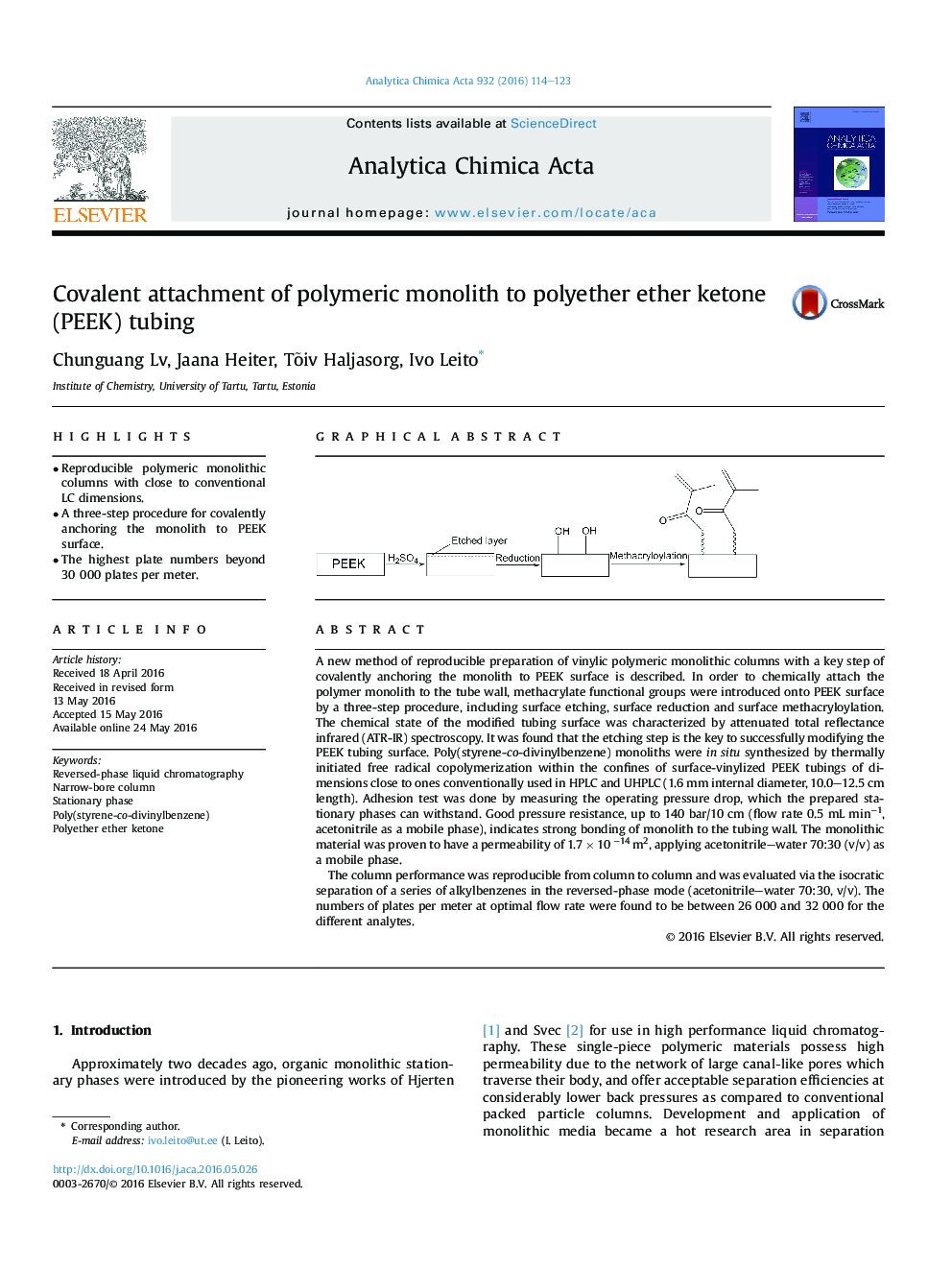| کد مقاله | کد نشریه | سال انتشار | مقاله انگلیسی | نسخه تمام متن |
|---|---|---|---|---|
| 1162788 | 1490900 | 2016 | 10 صفحه PDF | دانلود رایگان |

• Reproducible polymeric monolithic columns with close to conventional LC dimensions.
• A three-step procedure for covalently anchoring the monolith to PEEK surface.
• The highest plate numbers beyond 30 000 plates per meter.
A new method of reproducible preparation of vinylic polymeric monolithic columns with a key step of covalently anchoring the monolith to PEEK surface is described. In order to chemically attach the polymer monolith to the tube wall, methacrylate functional groups were introduced onto PEEK surface by a three-step procedure, including surface etching, surface reduction and surface methacryloylation. The chemical state of the modified tubing surface was characterized by attenuated total reflectance infrared (ATR-IR) spectroscopy. It was found that the etching step is the key to successfully modifying the PEEK tubing surface. Poly(styrene-co-divinylbenzene) monoliths were in situ synthesized by thermally initiated free radical copolymerization within the confines of surface-vinylized PEEK tubings of dimensions close to ones conventionally used in HPLC and UHPLC (1.6 mm internal diameter, 10.0–12.5 cm length). Adhesion test was done by measuring the operating pressure drop, which the prepared stationary phases can withstand. Good pressure resistance, up to 140 bar/10 cm (flow rate 0.5 mL min−1, acetonitrile as a mobile phase), indicates strong bonding of monolith to the tubing wall. The monolithic material was proven to have a permeability of 1.7 × 10 −14 m2, applying acetonitrile–water 70:30 (v/v) as a mobile phase.The column performance was reproducible from column to column and was evaluated via the isocratic separation of a series of alkylbenzenes in the reversed-phase mode (acetonitrile–water 70:30, v/v). The numbers of plates per meter at optimal flow rate were found to be between 26 000 and 32 000 for the different analytes.
Figure optionsDownload as PowerPoint slide
Journal: Analytica Chimica Acta - Volume 932, 17 August 2016, Pages 114–123